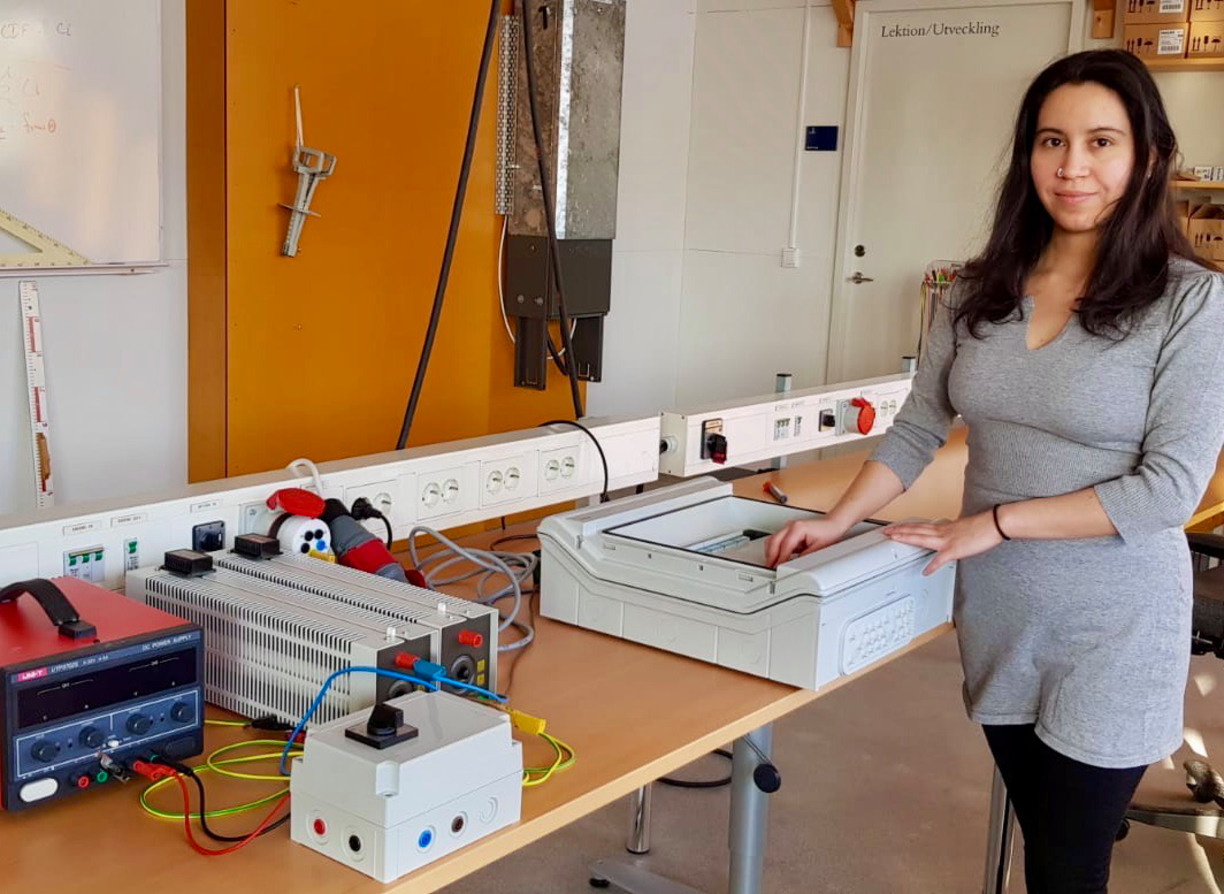
Ángela Espín-Delgado is one of several doctoral students working on the project.Photographer Jil Sutaria
5 March 2021
Standard for residual current device needs to be changed
New types of electrical equipment can spread different types of currents, frequencies and waveforms that are not currently measured according to current standards. Therefore, the standard must be updated, according to an ongoing research project on residual current device at Luleå University of Technology. Residual current device in photovoltaic systems can be adversely affected and become a safety risk.
- We want to see if it can lead to the trip requirement not being met, because it could of course be risky for people, says Ángela Espín-Delgado, doctoral student in Electrical Engineering at Luleå University of Technology.
This is a question that a research group at Luleå University of Technology is trying to answer in a research project commissioned by the Swedish Energy Agency and Energiforsk. It is inverters in photovoltaic systems that can cause problems by polluting the electricity grid with interference. Supratones, which is a key word in the context, are a type of disturbance at a certain frequency and which is a kind of debris in the electricity grid. They are one of the factors that affect how well modern electrical products work together.
In the research project, various earth fault circuit breakers have been tested and these have been exposed to supratones. Three types of earth fault circuit breakers were included in the experiment AC, A and B. By exposing type AC and A to supratones of between 2 and 150 kHz (kilohertz), the researchers wanted to see if the earth fault circuit breakers would trip unnecessarily, but it turned out the other way around.
- Instead of triggering unnecessarily, higher current was required for them to trip when we applied supratones, says Ángela Espín-Delgado.
More tests in progress
There is still a lot to investigate, for example that different frequencies affect earth fault circuit breakers differently, she points out. This means that the research project is far from complete. There is a condition of 30 mA (milliamps) for when earth-fault circuit breakers are to trip and this has been done in the tests that the researchers have done so far. More tests will now be carried out where the earth-fault circuit breakers are exposed to supratones of different frequencies. There is also another part of the project where the researchers investigate low-frequency alternating currents on the border of direct current with a risk that the magnetic core in earth-fault circuit breakers, type A and type AC will be saturated and that the circuit breaker will stop working.
The research project has a lot left to study, but it is already clear that the standards for earth fault circuit breakers need to be updated. The reason is that types AC and A today are only tested with alternating currents of 50 Hertz.
- Other currents, frequencies and waveforms that can be spread from new types of equipment, such as inverters in photovoltaic systems, are not taken into account, she says.
Published:
Updated:
